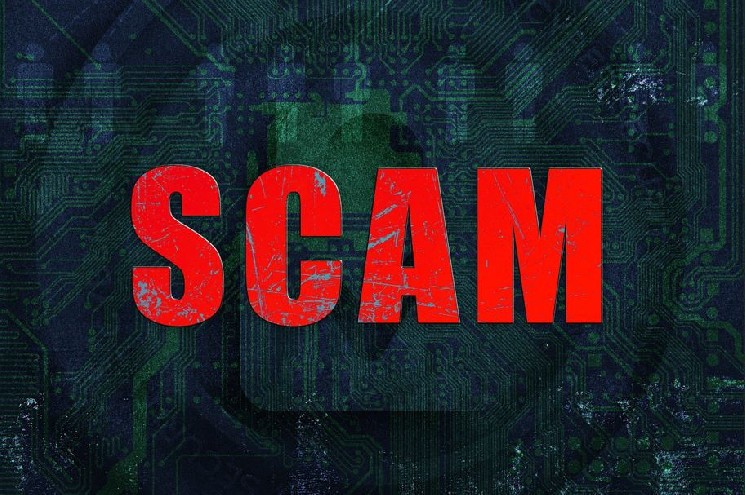Scammers Create Fake Shibarium Token as Launch Inches Closer

The parties involved had created a fake BLUR token and airdropped it to several notable addresses.
Scammers have turned their attention to the Shiba Inu community, as they recently created a fake SHIBARIUM token amid emerging reports of an imminent launch of the highly-anticipated layer-2 solution.
The parties involved in the malicious act had earlier created a fake BLUR token, as highlighted by blockchain security resource PeckShield, in a tweet today.
#PeckShieldAlert Scammers pretend as @blur_io Deployer to deploy fake $Blur and airdrop to Coinbase, Justinsun, and Yuga Labs, in an attempt to trick folks into thinking it’s the official #Blur #Airdrop. After removing liquidity, they created a fake $SHIBARIUM. Be alert! #DOGE pic.twitter.com/Lrs1v60g5c
— PeckShieldAlert (@PeckShieldAlert) February 15, 2023
According to PeckShield, they airdropped these fake BLUR tokens to wallets belonging to Yuga Labs, Justin Sun, and Coinbase, attempting to deceive people into thinking the bogus token is officially from Blur. Blur NFT marketplace unveiled its native governance token yesterday. It bears mentioning that Blur has an official ongoing airdrop and has warned investors to be mindful of scam airdrops.
Following swaps and transfers, the scammers removed liquidity from the bogus BLUR token and created a fake SHIBARIUM token. This move comes shortly after Shytoshi Kusama, Shiba Inu’s lead developer, disclosed yesterday that Shibarium is finally ready, and he will be releasing a series of Medium articles starting today to introduce the L2 network to the world.
Investors Should Be Cautious
The plans behind the fake SHIBARIUM token remain a mystery as of press time, but PeckShield has warned investors to be careful, as they could be potentially malicious.
Investors should desist from interacting with any strange tokens from now on, bearing in mind that the Shiba Inu ecosystem currently has only three tokens: Shiba Inu (SHIB), Bone ShibaSwap (BONE), and Doge Killer (LEASH). Notably, DappRadar has a recent article on detecting fake tokens such as this.
This development comes amidst a growing trend of creating fake tokens to exploit unsuspecting investors. A fake FTX 2 token was created last month after the FTX blowout. Moreover, a fake Uniswap (UNI) token was created last July and used to exploit investors through a phishing attack. The exploit resulted in at least $4.7M in losses.






 Bitcoin
Bitcoin  Ethereum
Ethereum  Tether
Tether  USDC
USDC  TRON
TRON  Dogecoin
Dogecoin  Cardano
Cardano  Bitcoin Cash
Bitcoin Cash  Chainlink
Chainlink  LEO Token
LEO Token  Monero
Monero  Stellar
Stellar  Zcash
Zcash  Litecoin
Litecoin  Hedera
Hedera  Dai
Dai  Cronos
Cronos  Tether Gold
Tether Gold  OKB
OKB  Ethereum Classic
Ethereum Classic  KuCoin
KuCoin  Gate
Gate  Algorand
Algorand  Cosmos Hub
Cosmos Hub  VeChain
VeChain  Dash
Dash  Tezos
Tezos  TrueUSD
TrueUSD  Stacks
Stacks  IOTA
IOTA  Basic Attention
Basic Attention  Decred
Decred  Theta Network
Theta Network  NEO
NEO  Qtum
Qtum  Synthetix
Synthetix  Ravencoin
Ravencoin  0x Protocol
0x Protocol  DigiByte
DigiByte  Zilliqa
Zilliqa  Nano
Nano  Numeraire
Numeraire  Siacoin
Siacoin  Waves
Waves  Status
Status  Ontology
Ontology  BUSD
BUSD  Enjin Coin
Enjin Coin  Pax Dollar
Pax Dollar  Hive
Hive  Lisk
Lisk  Steem
Steem  Huobi
Huobi  NEM
NEM  OMG Network
OMG Network  Bitcoin Gold
Bitcoin Gold  Augur
Augur  Ren
Ren  HUSD
HUSD